One of the more popular higher education debates if you are looking at California is that of USC vs Stanford. The two prestigious universities have different characteristics and salient features that attract different types of students looking for different university experiences.
USC or the University of Southern California (not to be confused with the University of South Carolina), nicknamed the Trojans, is a private R1 research university located in downtown Los Angeles. A prestigious university that attracts students from all over the globe, the school is known for its communication and media-related programs and its athletics. It’s ranked 28th in the 2024 edition of Best Colleges is National Universities (US News), with an acceptance rate of about 12%.
Officially called the Leland Stanford Junior University, Stanford, nicknamed the Cardinal, is also a private research university located in Palo Alto. One of the top universities globally, the Cardinal’s reputation is comparable to the Ivy Leagues of the United States. It is highly sought after for its renowned faculty, cutting edge facilities, and a vibrant intellectual community. Ranked no 3 in the US, Stanford’s acceptance rate is 4%.
Here is how the two schools stand apart. This article covers –
USC vs Stanford: A Quick Glance

“Is USC prestigious?” “Is Stanford a private school?” are some questions often asked by students who are researching options for higher education in the Golden State of California. To put it simply, the answer to both questions is yes. Even though Stanford ranks higher at a global level, USC is a prestigious private university and the oldest research university in California. Here is a quick look at some significant points in the USC Stanford debate.
1. Ranking and Prestige:
Stanford University is a world-leading school, ranked number 2 in the world, while USC ranks 74th on a global scale (Source: Times Higher Education Ranks, 2024). While USC has many highly regarded programs, its academic reputation is not as high as that of Stanford.
2. Ownership and Location:
Both universities are privately owned not-for-profit institutions. Stanford is a complete community in Palo Alto, at the heart of Silicon Valley while USC is located in downtown Los Angeles.
3. Campus Size and Vibe:
The Stanford campus is over 25 times the size of USC campus with its own zip code with less than half the student population of its LA competitor. The campus vibe is more suburban and quieter, when compared to the bustle of a Los Angeles college with a much bigger student body.
4. Acceptance Rates and Student Population:
The total student population of Stanford and USC is around 17,500 and 47,000, with acceptance rates of around 4% and 10% respectively. Stanford has one of the lowest acceptance rates in the country.
5. Academics:
While Stanford ranks higher, USC has more than twice the number of options at the undergraduate level. Stanford has world class programs in almost all disciplines while USC is particularly known for communication, media, journalism and film studies.
| USC | Stanford | |
| Established in | 1880 | 1885 |
| Ownership | Private research university | Private research university |
| Mascot | Traveler, a white horse with a Trojan warrior astride | Stanford Tree is the unofficial mascot |
| School Colours | Cardinal red and Gold | Cardinal red and white |
| Nicknames | Trojans | Cardinal |
| Academics | ||
| US News National Rank | 28 | 3 |
| Bachelor’s Degree Majors | 200+ | 66 majors |
| Number of Master’s Degrees Offered | 400+ | 150+ |
| Popular Areas of Study |
|
|
| Fees and Scholarships | ||
| Average Tuition Fee for BA/ BSc per year | $60,904 | $61,731 |
| Average Tuition Fee for MA/ MS per year | $66,000 | $61,000 – $66,000 |
| Average Financial Aid | Around $48,959 | Around $62,898 |
| Eligibility Criteria | ||
| Average High School GPA | 3.71 – 4.0 | 4.15 |
| Median SAT/ ACT Test Scores for admission | SAT: 1430 – 1550 ACT: 32 – 35 (Test Optional) |
SAT: 1450 – 1570 ACT: 34 (Test Optional) |
| English Language Requirements | TOEFL iBT: 100 IELTS: 7.0 |
TOEFL iBT: 100 IELTS: 7.0 |
| Acceptance Rate | ~ 10% | ~ 4% |
| Student Population | ||
| No. of undergraduate students in 2023 | 21,000 | 7,841 |
| No. of graduate students in 2023 | 26,000 | 9,688 |
| Average Early Career Salary of Graduates | $80,000 | $90,000 – $105,000 |
| Student Faculty Ratio | 9:1 | 5:1 |
| Average Class Size | Around 62% of classes have fewer than 20 students | Over 70% of classes have 19 or fewer students |
| Campus | ||
| Campus Location | Los Angeles | Palo Alto |
| Campus Type | Urban | Suburban |
USC versus Stanford: Academics

The first point to consider when deciding “Is Stanford or USC better?” is academics. Both are highly ranked universities located in the Golden State. Both Stanford and University of SoCal offer undergraduate, master’s, doctoral, and professional degrees to its students in varied disciplines. Both universities are internationally recognised. Then how do they stand apart from one another? What makes Stanford better than USC or the other way around? Let us dive in.
Overall and Subject Ranking
If university rankings play a cardinal role in your decision making process, then Stanford easily surpasses USC. Stanford ranks 3rd in the world according to ratings published by US News and World Report and 5th according to QS World University rankings. In contrast, USC ranks 28th and 116th, according to US News and QS WUR respectively. Stanford is a world leader when it comes to the study of Engineering, Artificial Intelligence, Material Sciences, Statistics, Business and Finance, Mathematics, Medicine and Biological Sciences, and computer science, just to name a few. As one of the foremost universities in the world, comparable to the likes of Oxford, Cambridge, Harvard or MIT, Stanford offers top-notch programs in almost all disciplines.
If you are asking the question, “Is USC prestigious?”, then the answer is yes. However, when compared head to head with Stanford’s position and reputation, USC does fall behind, except when it comes to athletics. While it does offer over 140 programs across all disciplines, USC does not rate highly as Stanford. Having said that, it is home to the School of Cinematic Arts which is one of the oldest and most prestigious film schools in the country. The university ranks highly for business programs, game development, economics, communication and media studies, performing arts, sociology and social policy.
Ultimately, both institutions foster a competitive yet collaborative environment, designed to push students towards excellence. Here is a quick comparison of the university ranks for 2024
| University of Southern California | Stanford University |
| Overall National Rank US News: 28 | Overall National Rank US News: 3 |
| Times Higher Education WUR: 74 | Times Higher Education WUR: 2 |
| QS WUR 2024: 116 | QS WUR 2024: 5 |
| Subjects and Other Ranking (Source: QS and US News) | |
|
|
If you analyse the positions displayed, it is clear that Stanford is one of the top 10 universities in the country or even in the world for many of the disciplines. As a prospective student, ranking and reputation can be a significant pro in your planning process. However, it is good to remember that higher ranks also mean stiffer competition. The ultimate deciding factor should also be the specific department, course curriculum, and to see if what the university offers fits your career plans. It is also important to look into the academic rigour of the department, what the university expects out of you, and the campus vibe before making your decision.
Constituent Schools
The courses at USC are offered by
- USC Alfred E. Mann School of Pharmacy and Pharmaceutical Sciences
- USC Annenberg School for Communication and Journalism
- USC Bovard College
- USC Dana and David Dornsife College of Letters, Arts and Sciences
- Division of Biokinesiology and Physical Therapy
- USC Glorya Kaufman School of Dance
- USC Gould School of Law
- Herman Ostrow School of Dentistry of USC
- USC Iovine and Young Academy
- Keck School of Medicine of USC
- USC Leonard Davis School of Gerontology
- USC Leventhal School of Accounting
- USC Marshall School of Business
- USC Mrs. T.H. Chan Division of Occupational Science and Occupational Therapy
- USC Roski School of Art and Design
- USC Rossier School of Education
- USC School of Architecture
- USC School of Cinematic Arts
- USC School of Dramatic Arts
- USC Sol Price School of Public Policy
- USC Suzanne Dworak-Peck School of Social Work
- USC Thornton School of Music
- USC Viterbi School of Engineering
The seven schools and colleges that constitute Stanford are
- Graduate School of Business
- Graduate School of Education
- School of Engineering
- School of Humanities and Sciences
- School of Law
- School of Medicine
- Stanford Doerr School of Sustainability
Key Dates for Application
In this section, we will be looking at the key dates for application and admission into undergraduate programs to get a sense of the timeline. It is also recommended that you verify with the specific department / school that you are applying to, just to ensure they do not follow a different cycle.
| Important Dates | USC | Stanford |
| Early Action Deadline | November 1 | November 1 |
| Regular Application Deadline | December 1 for for majors requiring a portfolio or audition
January 15 for all other majors |
December 1 |
| EA admission decisions Posted in | Mid to Late January | Mid-December |
| Regular Decision Posted in | April 1 | Early April |
| Deadline to accept offer of admission | May 1 | May 1 |
| Acceptance Rate | ~ 10% | ~ 4% |
While both universities offer an option of early decision, there is one major distinction that one has to take note of. Stanford offers what is called Restrictive Early Action (REA). Unlike many colleges, this is not binding (where applicants must attend the college if selected in the Early Action or Early Decision round), but only restrictive. According to Stanford REA policy, you cannot apply to any other college/university under their Early Action, Restrictive Early Action, Early Decision, Early Notification or any other binding plan.
In contrast, USC’s early action policy is both non-binding and non-restrictive. This option is not available for majors that require you to audition or submit a portfolio.
Degrees and Class Sizes
Another significant distinction in the Stanford USC debate is the difference in size – be it in terms of campus, student population, number of degrees offered or class sizes.
| USC | Stanford | |
| Campus Size | 229 + 79 (University Park + Health Science Campus) | 8,840 acres |
| Undergraduate Population | ~21,000 | 7,841 |
| Graduate Population | ~26,000 | 9,688 |
| Number of Undergraduate Options | 200+ majors | 66 majors |
| Number of Graduate Options | 400+ | 130+ |
| Student – Teacher Ratio | 9:1 | 5:1 |
| Classes with fewer than 20 students | Around 62% | Over 70% |
While Stanford is immense in terms of campus size, USC is a much larger university in terms of student population and degrees offered. It is your vibrant bustling campus with students exploring varied aspects of interdisciplinary studies while balancing academics, athletics and extracurriculars. In contrast, Stanford is calmer, quieter and more suburban in its location and vibe, primarily because of the smaller student body.
Semester vs Quarter
Another important difference in the debate of USC v Stanford is their academic calendars. Stanford follows the quarter system while USC follows the semester system. This comes with its own set of advantages and disadvantages.
Pros of a Quarter System
- One of the biggest advantages in a quarter system is that it gives them the flexibility to choose more courses and interact with more faculty members. On an average, a student studying in this model ends up graduating with 18 more credits (6 more courses) than a student in a semester cycle.
- The course load is smaller, allowing students to better focus.
- Switching majors or raising GPA is comparatively easier than in a semester since course weight is more distributed in quarter terms.
Cons of a Quarter System:
- The main disadvantage is that quarters do not give a student enough time to settle into a course of study. While a course may be short, the level of the coursework might be intense to cover the required material in 10 weeks. Essentially, it gives you less time to study.
- It can be harder to schedule internships, co-ops, or study abroad programs since most of them are scheduled around the semester timeline.
What are the top three courses to study at USC?
1. Communication and Journalism

The Annenberg School of Communication and Journalism at the University of Southern California is one of the highly ranked schools of the university. QS WUR has ranked this school 2nd in the world for Communication and Media Studies, having overtaken Harvard, Stanford, UPenn and NYU. You can major in Communication, Journalism or PR and Advertising at the undergraduate level. The school also has numerous postgraduate programs and a doctoral degree in communication. Located in the heart of Los Angeles, the school works closely with media and technology partners that include industry leaders such as Buzzfeed, Spotify, Bloomberg, ABC News and others.
2. Film Studies

USC School of the Cinematic Arts is one of the country’s oldest and most prestigious film schools and was created in agreement with the Academy of Motion Picture Arts and Sciences in 1927. The school has seven academic divisions ranging from animation and digital arts to interactive media, gaming and film production. Its location in the land of Hollywood also helps provide its students with varied opportunities to explore the real-world demands of the industry.
Since 1973, at least one SCA alumnus has been nominated for an Academy Award every year, totaling around 256 nominations and 78 wins. The school also has a very long list of notable alums, including George Lucas, Shonda Rhimes, Judd Apatow, and many others. Steven Spielberg even has an honorary degree from USC SCA. The school draws creative talent from all over the world and is highly selective, with an acceptance rate of around 3%.
3. Business and Entrepreneurship

Besides humanities and the creative arts, other top-notch disciplines at USC are business and entrepreneurship at the Marshall School of Business. Ranked 18th out of 124 b-schools in the country, this school enables students to combine in-depth knowledge of the theory and practice of business with liberal arts and social sciences to apply in use-case scenarios. The emphasis is on tech fluency, human leadership and real-world learning. In addition to a host of graduate-level programs, Marshall School of Business also has a number of undergraduate business programs, including AI for business, real estate finance and development, and business of cinematic arts.
What are the top three courses to study at Stanford?
1. Computer Science

The Department of Computer Science at Stanford is ranked world number 2 by US News and QS WUR. The research conducted by both students and faculty is at the cutting edge of the discipline in areas such as AI, robotics, biocomputing, scientific computing and more. The department offers bachelor’s, master’s and doctoral degrees in computer science, specialising in Computational Biology, Network Security, Human-Computer Interaction, Management Analytics, Visual Computing and so on. It is by far one of the largest majors offered by the University.
2. Engineering

The Stanford School of Engineering is also ranked 2nd in the world, overtaking both Oxford and Cambridge in the UK, only to be surpassed by MIT. The school has nine academic departments ranging from Aeronautics and Astronautics to Mechanical Engineering. The school has been and continues to be at the forefront of innovation, creating pivotal technologies that have transformed the worlds of information technology, communications, health care, energy, business and beyond.
3. Business and Management

No list of the top courses at Stanford would be complete without including courses from the Stanford School of Business. But, before we go into the details, let us be clear that the Stanford B-school is a grad school and the university does not offer any undergraduate programs in business. Students interested in this field right from the undergraduate level end up majoring in economics, management science, or any of the other fields. That said, the Graduate Business School ranks first in the world for its MBA programs, according to both US News and QS Ranking. The school offers an MBA with various specializations, a master’s degree in management, a PhD, Executive education and online programs. Supported by world-renowned researchers and leaders, and experiential courses, this b-school will open doors for you all over the world.
Notable Faculty, Alumni and Research Facilities
Stanford is home to 84 Nobel Laureates, McArthur Fellows and numerous other distinguished scholars. The university has an extensive list of notable alumni, including Sundar Pichai, Mukesh Ambani, Sigourney Weaver, Elon Musk, Jawed Karim, William Hewlitt, former US President Herbert Hoover and many others. Besides notable alumni and pioneering professors, the campus also houses top-notch research facilities, including the Neuroscience Institute or AI Lab at Stanford. Stanford attracts $1.98 billion in new awards from external sources alone.
USC is the alma mater of astronaut Neil Armstrong, entrepreneur Sol Price, founder of Price Corp (now Costco), director George Lucas, film producer Susan Downey, actors Tom Selleck, Patric J Adams, LeVar Burton, Lily Collins and many others. The university is also home to the Agilent Center of Excellence in Biomolecular Characterization, the Southern California Environmental Health Sciences Center, and the Spatial Sciences Centre, just to name a few. It is also a highly ranked R1 research institute with an annual research expenditure of around $1.04 billion.
| Academics – Key Similarities and Differences |
| 1. Stanford is a world leader in numerous disciplines, including engineering, computer sciences, physical sciences, economics, social sciences, maths, and business. USC does not rate as highly as Stanford but has some of the best communication, journalism and performing arts programs.
2. USC has more than double the number of undergraduate majors to choose from, when compared to Stanford. 3. Stanford follows the quarter system while USC’s academic calendar is built on a semester system. 4. Stanford has smaller class sizes and a lower student-faculty ratio when compared to USC. 5. Both schools offer numerous study abroad options that allow students to attend a semester or a year abroad in any of their partner institutions. 6. Both schools offer compulsory core curriculum for students of all majors to build an intellectual foundation and develop well-rounded skill sets. |
USC vs Stanford: Fees and Scholarship Opportunities

After academics, the next significant point that needs to be addressed in the Stanford vs University of Southern California debate is the finance involved. The cost of tuition, additional expenses, housing, and the nature of scholarships offered are significant considerations to be factored in, before making a choice.
In terms of ownership, both Stanford and USC are privately owned, not-for-profit institutions and, therefore, do not have the reduced tuition rates for in-state students that public universities offer. The following table can help you compare these two prestigious institutions in the matters of fees and scholarships.
| USC | Stanford | |
| Annual Tuition (Bachelor’s) | $69,904 | $61,731 |
| Average Annual Tuition (Master’s) | Around $66,000 | $61,000 – $66,000 |
| MBA Tuition | $73,851 | $82,455 |
| Housing (yearly, room and board) | $19,541 to $21,785 | $20,544 |
| Types of Financial Aid | 1. University Grants 2. Federal Pell Grant 3. Can Grants including Cal Dream Act 4. Scholarships 5. Departmental Awards 6. Athletic Awards 7. Federal Work-Study 8. Loans |
1. Scholarships (primarily need-based) 2. Federal and State Grants 3. Student Employment |
| International student scholarships |
|
|
| Average need-based aid | Around $48,959 | Around $62,898 |
| Percentage of undergrad students receiving some form of financial aid | ~ 66% 21% receive merit scholarships |
~ 66% ~50% receive need-based aid |
| Admission Decisions | Need blind | Need aware for international students |
| Demonstrated Need Cover | 100% | 100% (Families earning less than $150,000 with assets typical of that income level pay no tuition.) |
Note:
1. The tuition fees are average figures, calculated for a typical academic year of 9 months. The fee will be higher should you choose to take extra courses in the summer months.
2. The tuition fee amounts in the table are indicative of only the cost of attendance. It does not include books, student health insurance and other expenses. Student insurance alone can cost between $3,000 – $7,000 a year.
3. Stanford University has very limited merit scholarship options due to the university’s commitment to providing need-based aid. However, the university does have a few need-based options for international students also. But, it will be a consideration during the admission process. In contrast, USC does not allow international students to apply for need-based aid but has numerous merit scholarship options for overseas applicants.
USC vs Stanford: Student Life and Post Graduation Opportunities

Having looked at academics and the costs involved, let us look at some of the other aspects that can help us answer the question, “Is Stanford or USC better?”.
1. Location
USC:

Source: Wikimedia Commons
The University of Southern California is located in Los Angeles, a sprawling city in Southern California, renowned for its beaches and Hollywood. With a population of around 3.8 million, the city is known for its vibrant and diverse culture, attracting people from all over the world. The entertainment capital of the world, the city has also hosted the Summer Olympics for two years, and is slated to host again in 2028.
Besides its culture, the city is also rapidly growing as a tech capital, keeping up with its northern neighbours. It also has a Mediterranean climate with mostly pleasant days throughout the year that draws a lot of students to USC.
Stanford:

Source: Wikimedia Commons
Stanford is situated in Palo Alto, Northern California, at the heart of Silicon Valley. Considering its size of over 8,000 acres, the university is a community unto itself and even has its own zip code. It has a quieter, suburban ethos, unlike the bustling city life of SoCal, and yet is situated just a few miles from the city centre. For students looking to immerse themselves in real world experiences and internship opportunities, Stanford’s location plays a significant advantage. The location also makes it more feasible for tech and business magnates from the Silicon Valley to often address students on campus.
2. Campus
USC:
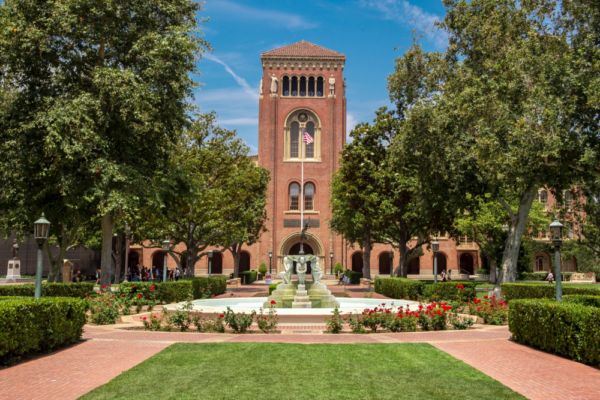
Source: USC
The University of Southern California is divided into the University Park campus and the Health Sciences Campus. The larger, and the main, University Park Campus spans 229 acres and houses USC’s 23 prestigious academic schools and units. Located just 3 miles south of downtown Los Angeles, this campus is a verdant respite in the middle of a busy city. Right next to the campus is the historic Exposition Park, known for its captivating museums and recreational activities. The University Park campus is known for its historic brick architecture and peaceful lawns.
About 6 miles Northeast is the Health Sciences Campus which is a major centre for clinical biomedical research in the fields of cancer, gene therapy, the neurosciences, and transplantation biology, among others. This 79-acre campus is also home to the Keck School of Medicine and the School of Pharmacy programs as well as the world-class Keck Medical Centre.
Stanford:
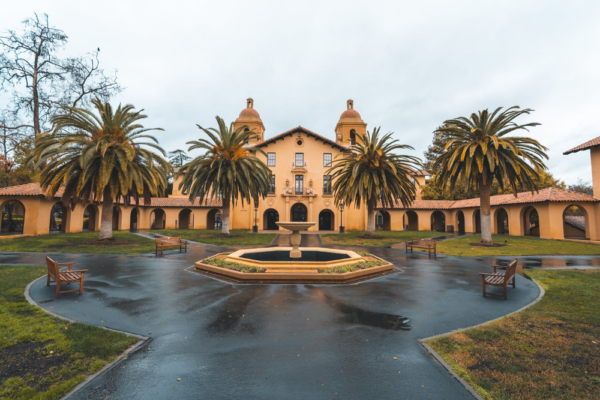
Source: Stanford
Situated in the centre of the San Francisco peninsula, the Stanford campus encompasses 8,180 acres of land. 49 miles of roads are part of this campus, helping connect students and faculty throughout. Around 630 buildings, a historic equestrian barn, a biological preserve, a centre for automotive research, and an educational farm are part of the campus. The amenities are state of the art, keeping with its reputation of being one of the top universities in the word. While freshmen are not allowed to bring cars, the main parts of the university are easily accessible by bicycle.
The architectural jewel of the campus is the Stanford Memorial Church that was built during the American Renaissance. A mile-long, tree-lined Palm Drive, lush lawns and gardens, and the red roofed buildings are quintessentially “Cardinal” and create a warm atmosphere for academic, extracurricular and social activities. While there is no official mascot for Stanford, the university band mascot, the Stanford Tree functions as the unofficial one.
3. Student Population
USC: In the academic year 2023-2024, USC had around 21,000 undergraduates and around 26,000 graduate students bringing the total student population up to around 47,000 (rounded to the nearest 500). Students from California make up around 42% of the first year class. As of Fall 2023, the campus had the most number of overseas students, with around 27.1% of the student body composed of students from outside the United States. Caucasian students made up around 23% of the student body and Hispanic and African American students together made up around 22%. USC’s student body also makes it one of the most economically diverse universities in the country.
Stanford: The class of 2027 comprises 7,841 undergraduates and 9,688 graduate students. It is a significantly smaller student body in a much larger campus when compared to USC, UCLA, or even any of the University of California campuses. The university has the funding and the budget to maintain a student-faculty ratio of 5:1. As one of the top universities in the world, the student population at Stanford is not simply a microcosm of life in the Bay area. Only about 36% of the Cardinals are from California. About 8% of the undergrad population and around 30% of the graduate population are international.
4. Housing
USC: Unlike Stanford, USC does not require freshmen to necessarily stay on campus. In-campus residence options include dorms, suites and apartments for both undergraduate and graduate students. In-campus housing costs around $19,541 to $21,785 per year. However, due its substantial student body, typically around 36% of students stay on campus while the others look for housing outside.
For freshmen applicants, May 1 is the deadline to be guaranteed a space in campus housing, although it does not guarantee a particular space. Early receipt of a housing application simply increases your chances of being assigned one of your choice. Due to heavy demand, the university typically does not guarantee housing.
Stanford: Affectionately referred to as “the Farm”, Stanford has one of the largest residential campuses in the country. All new students are required to live on campus in the first year. About 82% of Stanford students at both the undergrad and graduate level choose to live on campus. With over 14,000 units/ beds dedicated to student housing, the university guarantees housing for undergraduates for all four years and provides housing for over 70% of graduate students.
The university provides a number of options including traditional dorms, university academic and cultural theme houses, co-ops, self-ops and apartments. All housing locations at Stanford, except the Mirrielees apartments and co-op houses cost around $4,530 per quarter.
5. Sports and other extracurricular activities
USC: While Stanford typically supersedes USC in academics, USC usually dominates athletics. The USC team, referred to as the Trojans, participates in the Pac-12 Conferences and has won over 135 National Championships. Among all sports, football games are treated with reverence and the USC Trojans are one of the finest teams in the country. USC’s Caleb Williams was selected No. 1 overall by the Chicago Bears in the first round of the 2024 NFL Draft on Thursday. The Women of Troy are also stepping into the Big Ten conference playing college basketball against their rivals.
In short, the Trojans are considered one of the most successful athletic programs in the country. Besides teams that compete at the national level, the Recreational Club Council at USC has over 50 club sports that enable students to participate at different levels. Moreover, the university has over 1,000 student organizations that cater to varied interests.
Stanford: Called the Cardinal because of university colour, Stanford retains its position as the country’s most successful intercollegiate athletic department. 177 athletes have gone on to compete in the Olympics and have won 296 medals. The Stanford program has won 135 NCAA championships. In addition to its varsity sports, Stanford Athletics supports campus-wide physical education academic classes, fitness and wellness, aquatics, intramurals, adventure programming and 43 club sports.
Looking beyond athletics, the university enables over 700 student organizations and clubs, student government, art studio, alumni associations, fraternities and sororities, intramural sports, dance teams, cheerleading teams, gender equity resource centre, graduate assembly, the centre for leadership and community engagement, musical performance groups, and publication and media groups.
6. Internships
USC: While there is no specific number for the correct number of internships, Dornsife students typically complete 2 internships during their undergraduate study. The USC Career Centre coordinates and enables students to sign up for internships.
Stanford: The university’s career cell is the ideal place to begin your research for internships anywhere. With internships, you can gain more credits, boost your resume and experience the real-world demands of your profession. While listings are available throughout the year, you are expected to plan your internships around your coursework.
7. Employability
USC: Of the undergraduate class of 2022, 93% were either employed or continuing education six months after graduation. The top industries that USC graduates went into include finance, consulting, advertising/ marketing and programming. Top recruiters include USC, Deloitte, EY, Amazon, KPMG and Microsoft. The average starting salary of a USC graduate is around $80,000.
Stanford: In 2022-23, over 93% of Stanford graduates received job offers within 4 months of graduation. The mean early-career (0-5 years of experience) pay of Stanford graduates is around $93,000. Stanford University’s reputation opens up numerous opportunities for graduates across disciplines. The institution’s academic pedigree typically allows its graduates to be recruited at much higher salaries than most other universities.
Summary

Deciding on Stanford v USC is not a simple task. Both are highly reputed schools, highly selective, and have their signature academic programs. That said, here is a summary of the differences.
Stanford is better suited if
- You are looking for a university that is highly ranked and a world leader in almost all disciplines.
- You can keep up with the academic rigour and then reap the benefits of the Stanford name in your career.
- You would enjoy studying in a large campus that is an entire community in itself.
- You prefer smaller classes with more professors available per student.
- You want to avail their numerous need-based financial aid options
- You prefer staying in dorms/ in-campus housing (You have the option of staying outside but Stanford is one of the largest residential universities in the country).
- You prefer a suburban university that also allows you to closely interact with Silicon Valley for real world experiences.
USC is what you must look into if
- You do not attach much weight to rank but to the course and the curriculum that you are looking for.
- You want to pursue any of the film, journalism or media related courses.
- You would enjoy living in the heart of LA, in a bustling campus and explore a media-related career in the heart of Hollywood
- You prefer staying off-campus since housing at USC can be competitive.
- You are looking for merit scholarship options in addition to need-based aid.
- Athletics is an important part of your university experience.
While these can be factored into your decision, the ultimate call rests on whether the course curriculum and the learning outcomes meet your career plans. The most significant part of your research is to compare courses, syllabi, electives, faculty and research facilities of your preferred degree program, speak to current students, and then decide depending on which school better suits your needs.
We understand that becoming an international student can be very thrilling, but the prep and paperwork of it all can get overwhelming. The easiest way to reduce your stress is to sign up with TC Global.
We simplify international education, learning, and mobility through connecting students, universities, and a global community on a single platform where there are over 1000+ education providers and over 80,000+ courses.
Our platform enables students to study anywhere in the world in just a few steps. From search and discovery and finding the right course fit for you, to applications, visas and departure – we see you through it all.
To move forward with us, download our app or visit tcglobal.com and sign in to create an account on our student platform and onboard with us in quick, easy steps.! 🚀
Then simply set up a visit Calendly.com/tcglobal to pick a Relationships Team closest to you and choose a slot to meet with a Relationship Member. Be it USC vs Stanford or any such debates, our experts will be with you every step of the way to help you decide.
Let’s shape your future together.
You May Also Like:
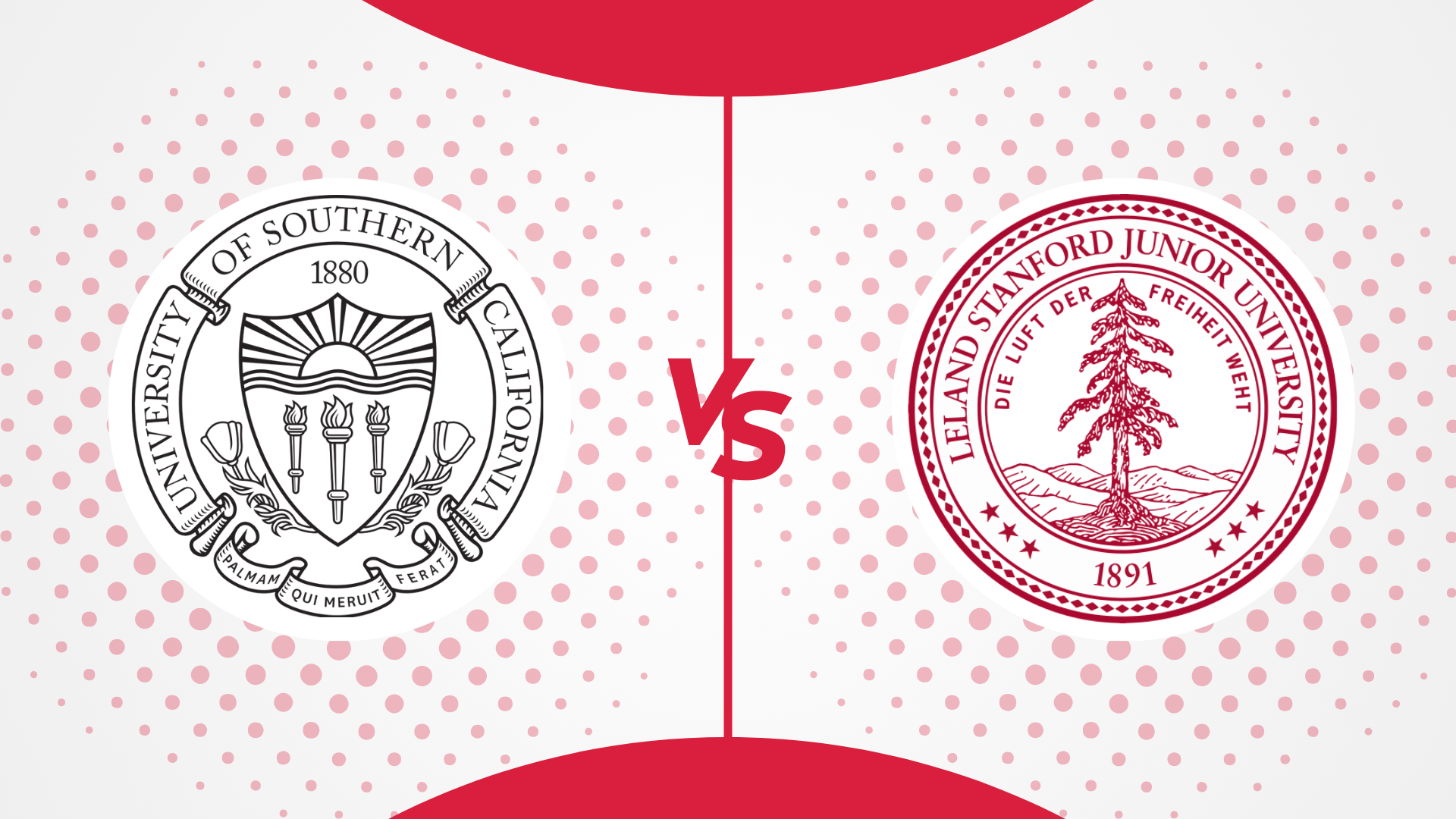
Compare more universities in USA
-
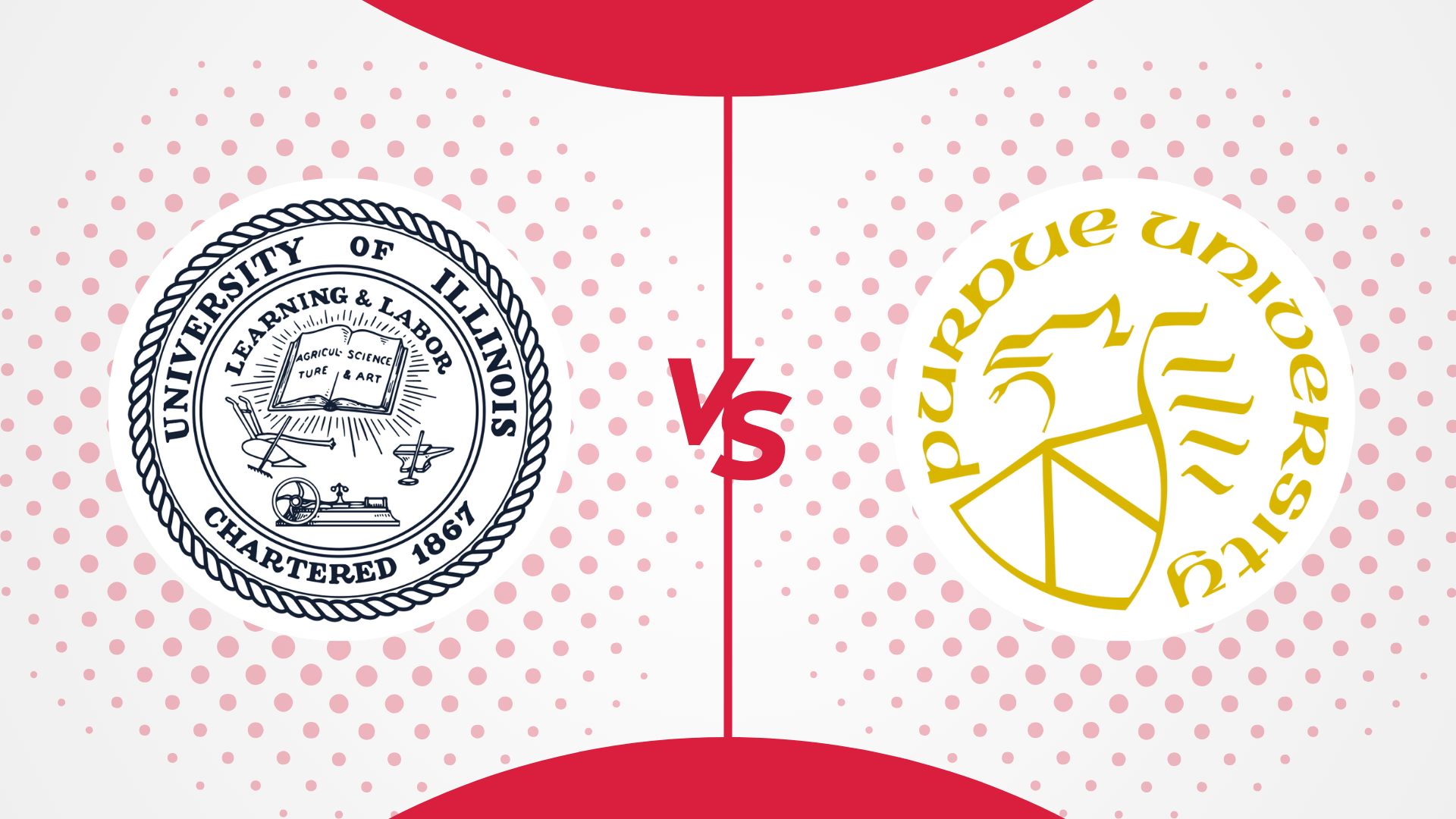
Purdue vs UIUC: How Do They Compare in 2025?
December 16, 2024 -
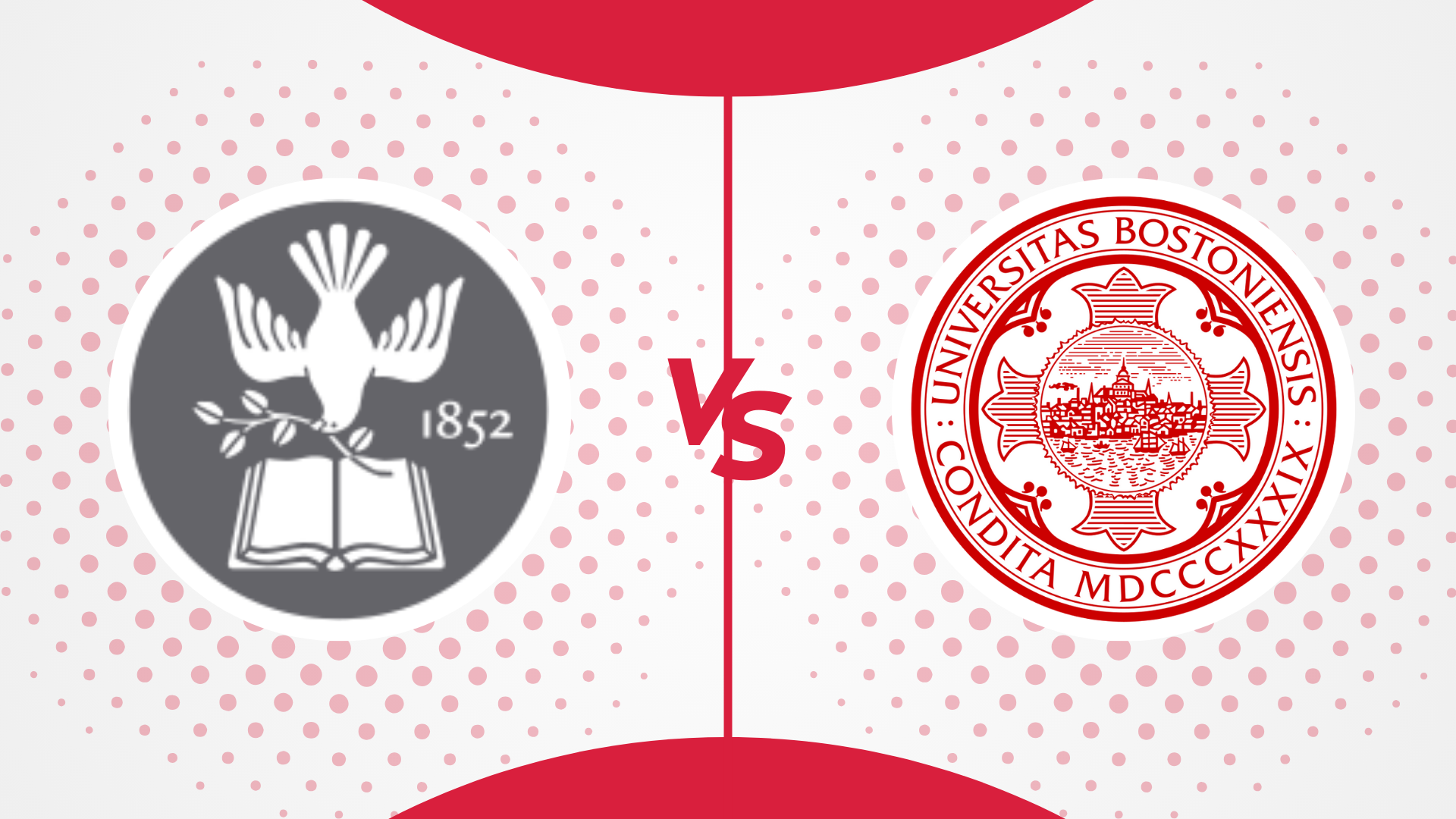
Tufts vs BU: How Do They Compare in 2025?
December 16, 2024 -

UIUC vs Georgia Tech: How Do They Compare in 2025?
December 3, 2024 -

Georgia Tech vs UT Austin: How Do They Compare? [2025]
September 24, 2024 -

UC Davis vs UC Irvine: How Do They Compare in 2024
September 10, 2024 -
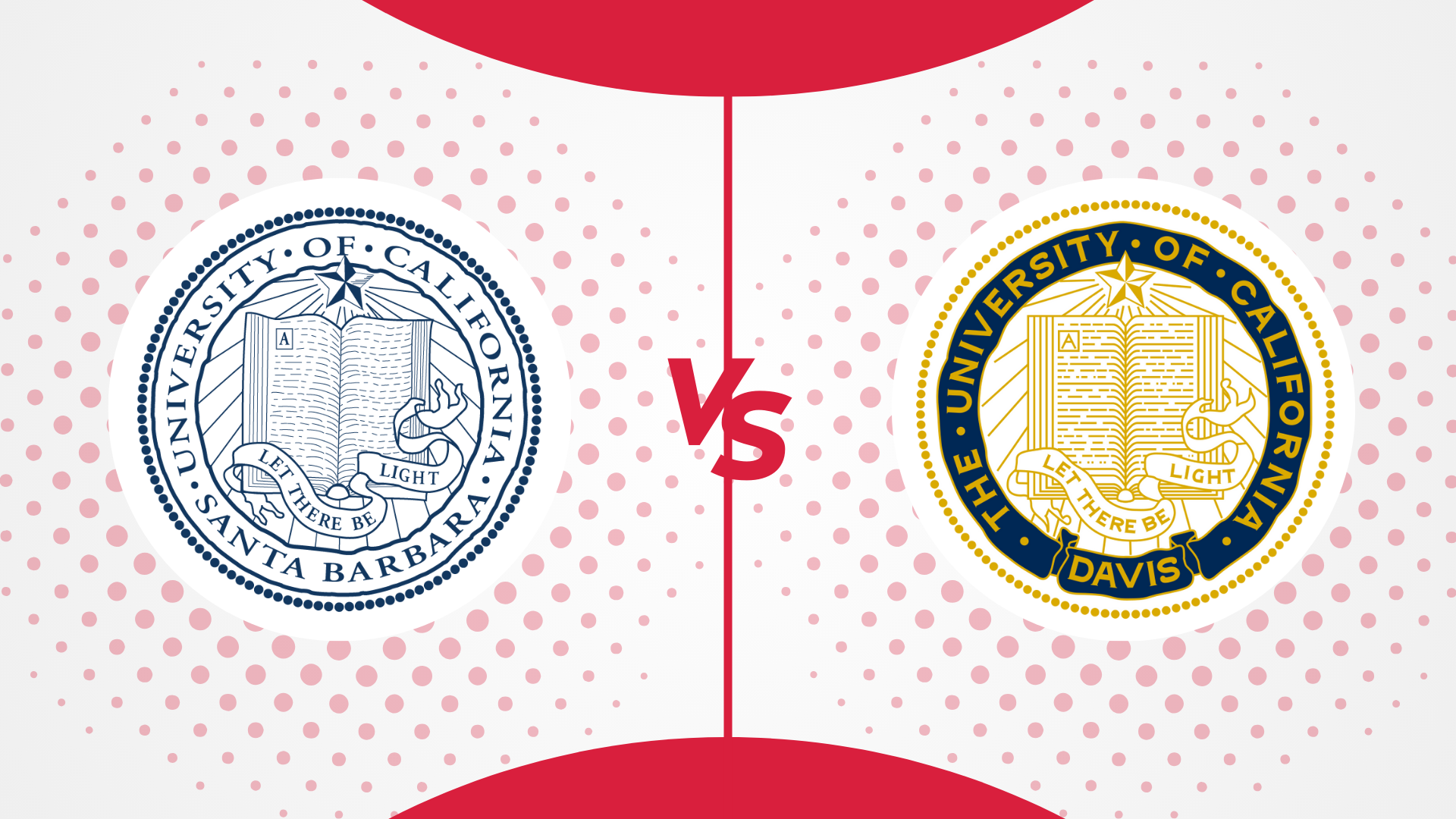
UC Santa Barbara vs UC Davis: How Do They Compare? [2024]
August 30, 2024 -
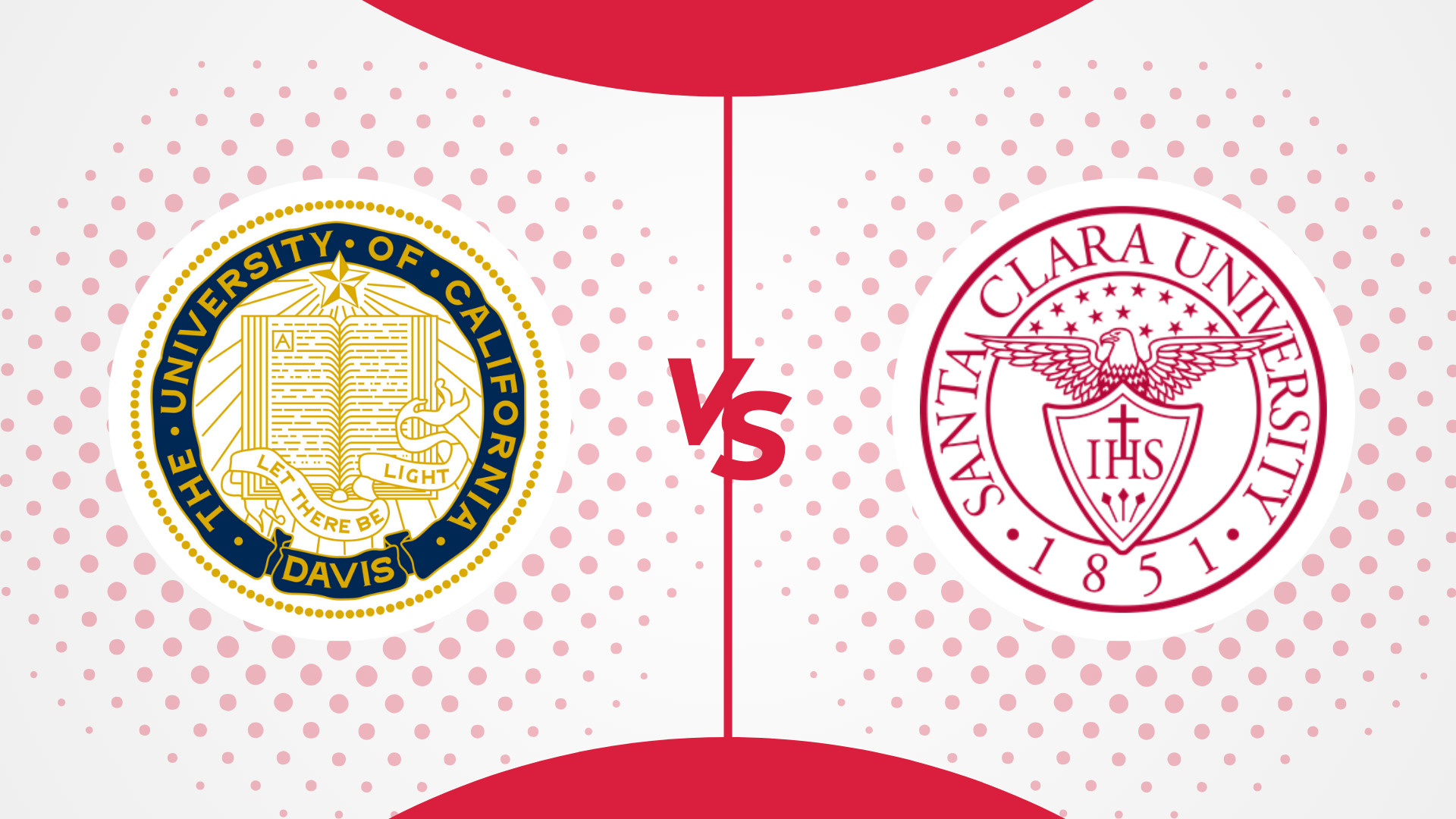
UC Davis vs Santa Clara University: How Do They Compare? [2024]
August 23, 2024 -

University of Chicago vs Northwestern University: How Do They Compare
August 20, 2024 -

Georgia Tech vs MIT: How Do They Compare? [2024]
August 7, 2024 -

Caltech vs MIT: How Do They Compare [2024]
August 2, 2024 -

MIT vs Harvard: How Do They Compare [2024]
July 27, 2024 -

Cornell vs Harvard: How Do They Compare? [2024]
July 27, 2024 -

Yale vs Harvard: How Do They Compare [2024]
July 22, 2024 -

Harvard vs Princeton: How Do They Compare [2024]
July 16, 2024 -
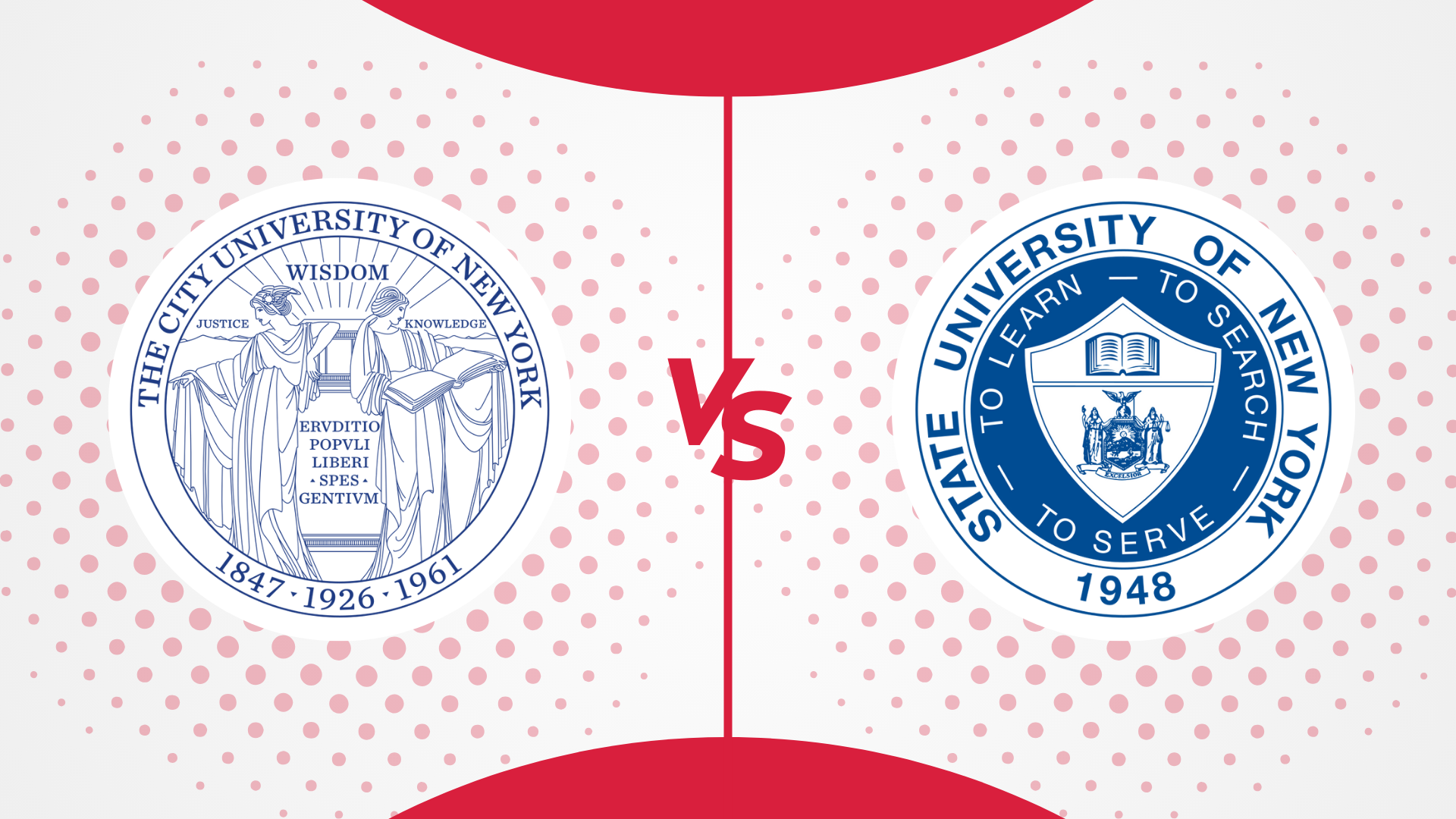
CUNY vs SUNY: Which One is For You in 2024
July 9, 2024 -
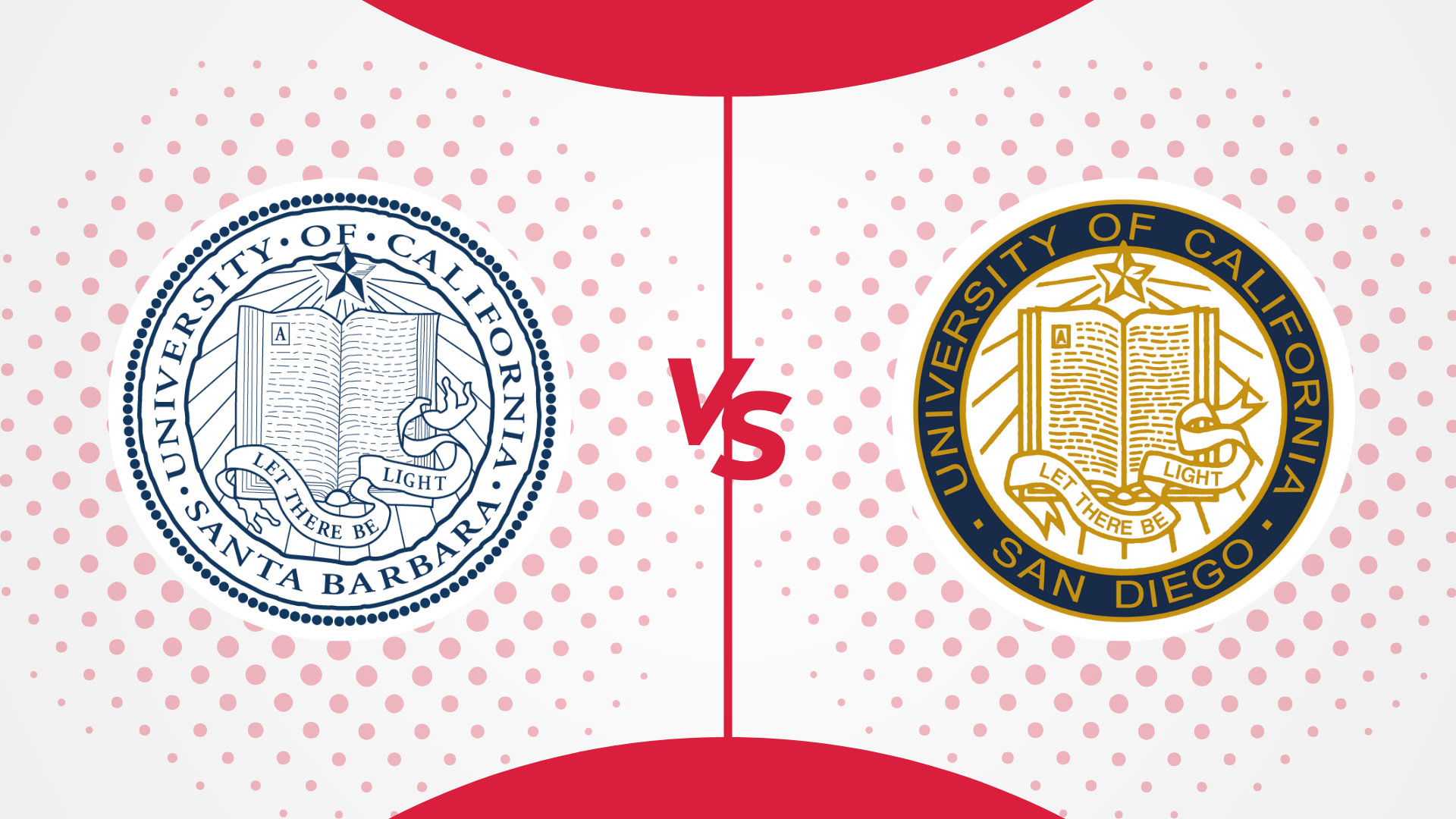
UCSD VS UCSB: Which One is Better For You in 2024
July 9, 2024 -
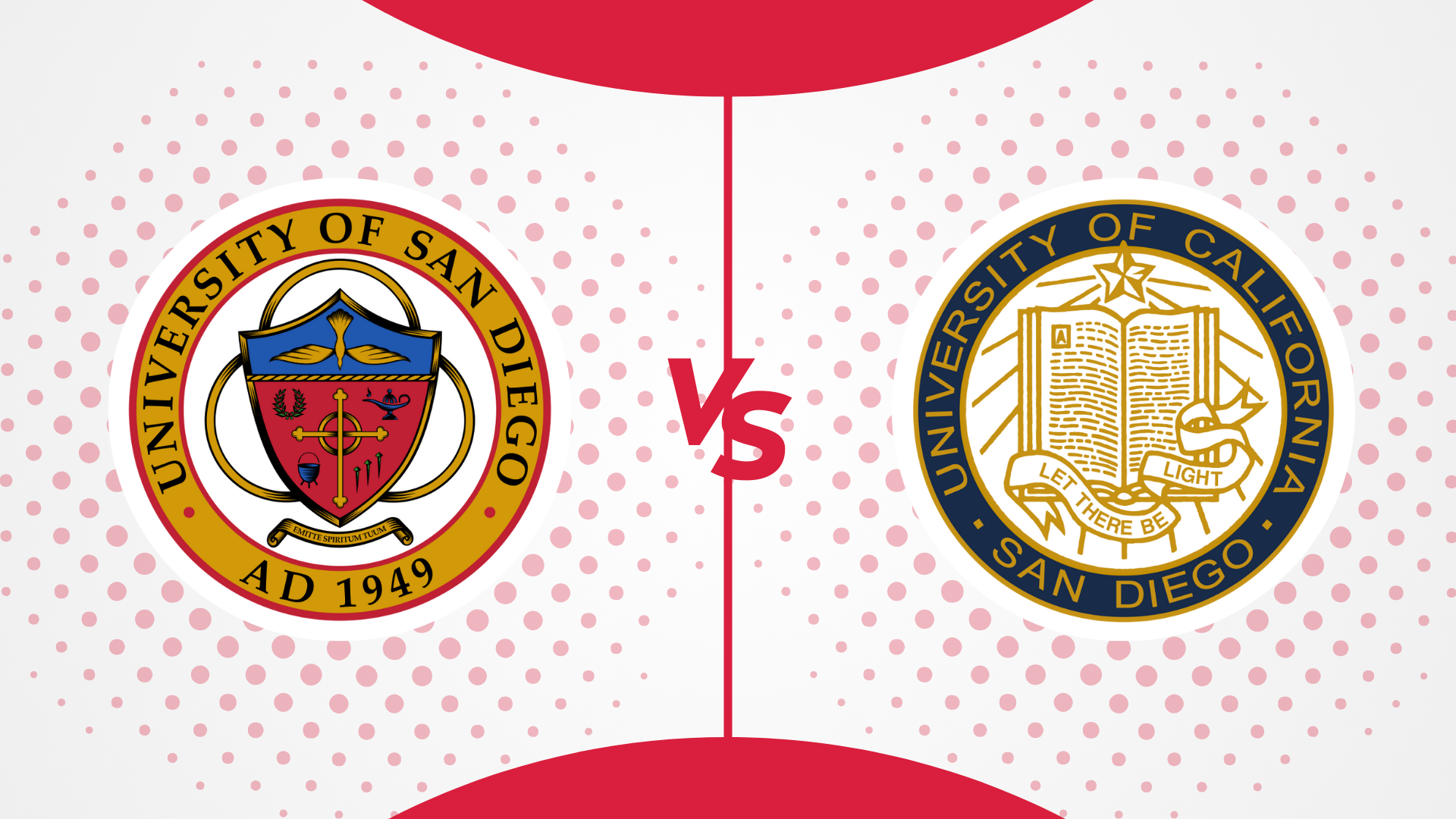
USD vs UCSD: Which one should you choose in 2024?
July 9, 2024 -

UC vs CSU: Which One is Better in 2024?
July 9, 2024 -
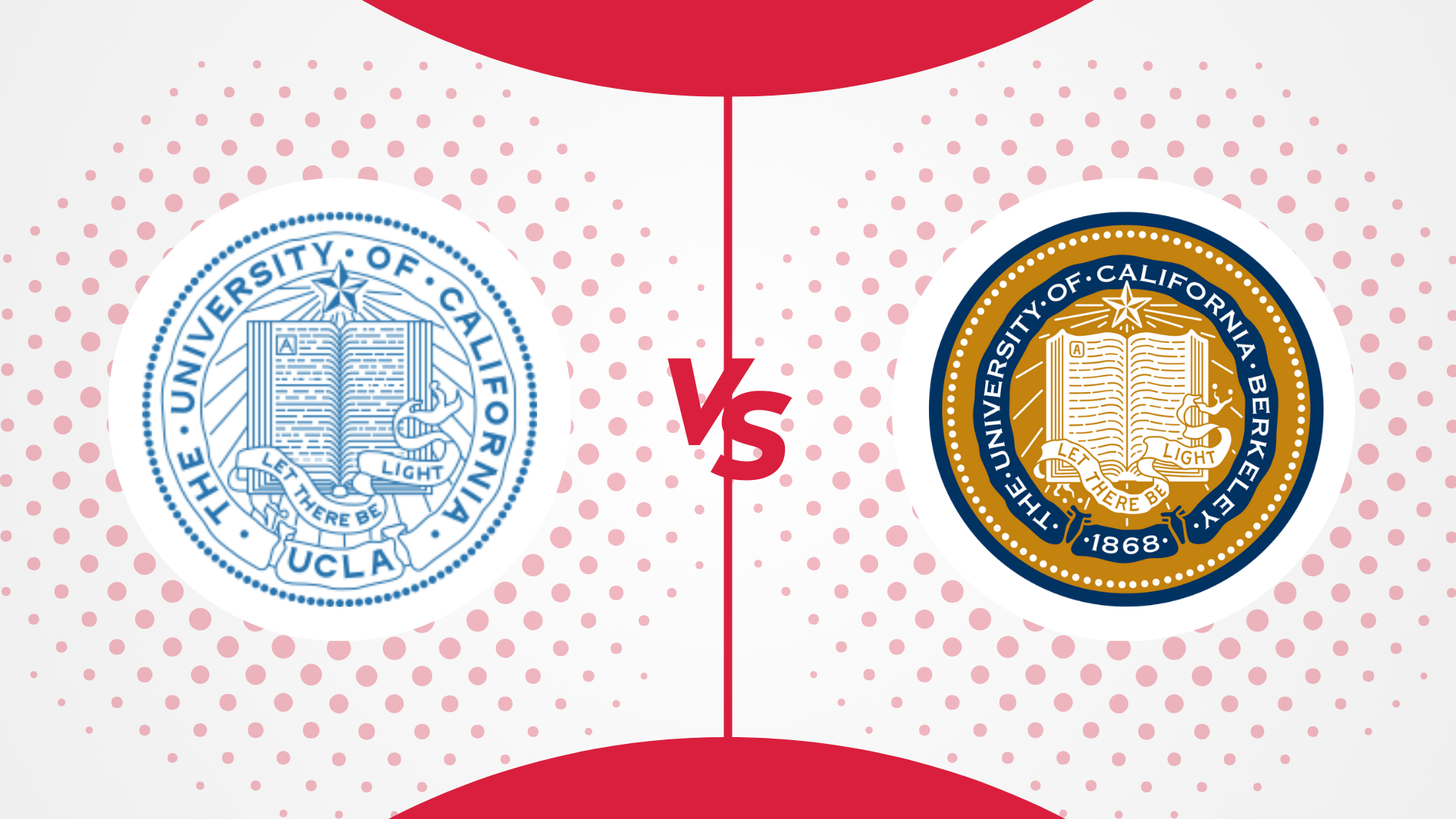
UCLA vs UC Berkeley: Which One is Best in 2024
July 9, 2024 -

University of Arizona vs Arizona State University: Which One is Better in 2024
July 9, 2024 -

Penn State vs UPenn: Which is Better for International Students in 2024
July 9, 2024 -

Northeastern vs Northwestern: Which One is Best in 2024
July 9, 2024 -

Northeastern University vs Purdue University – Which One is Better in 2024?
July 9, 2024 -

Boston College vs Boston University: Which One is the Best in 2024?
July 9, 2024 -

LSU vs UCLA: Which Is Better For You In 2024?
July 8, 2024 -

NYU vs Boston University: Which One Is Better For You In 2024
July 8, 2024 -

USC vs UCLA: Which One Is Better For You In 2024?
July 5, 2024 -
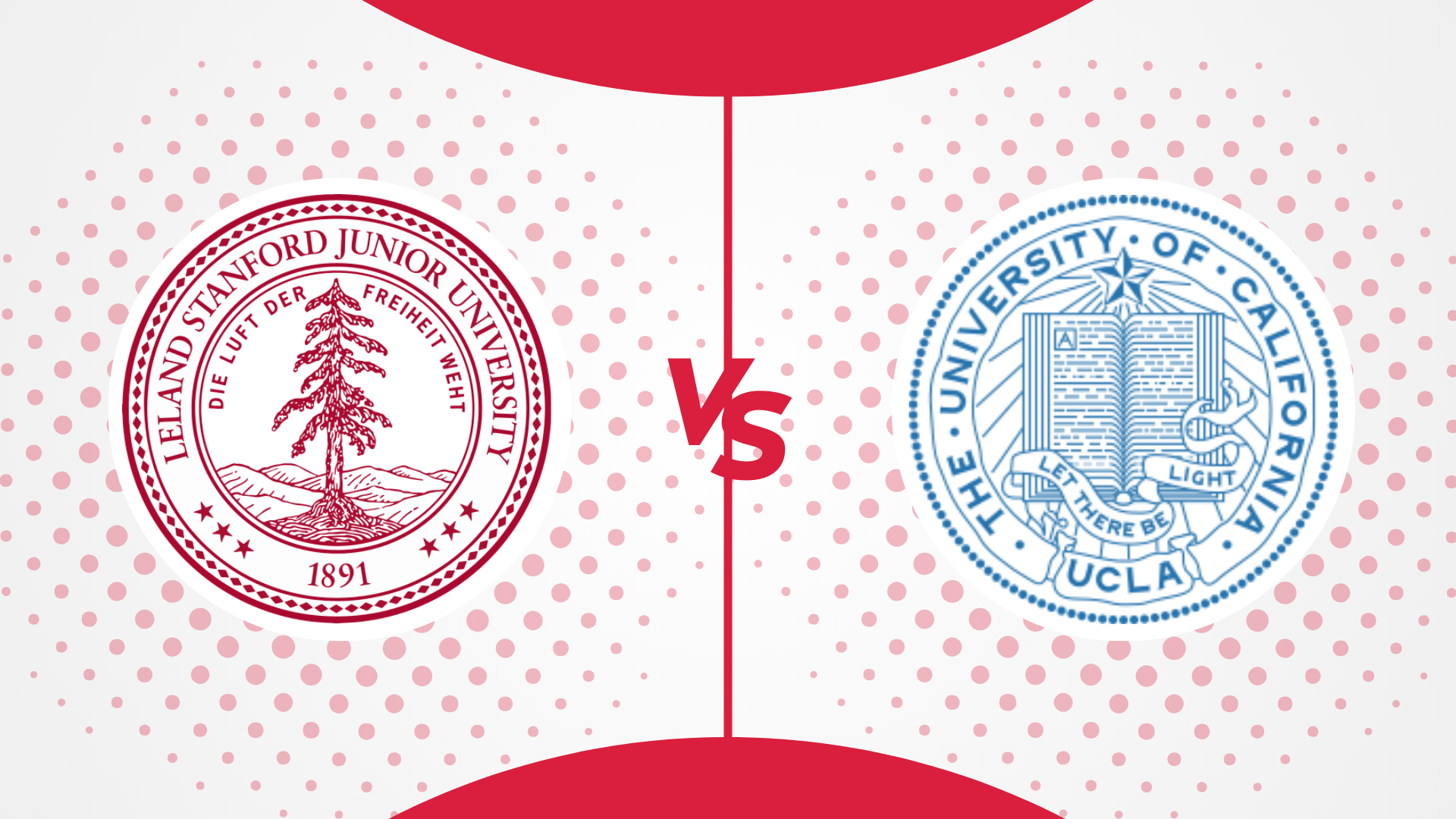
Stanford vs UCLA: Which One is Better For You in 2024
June 28, 2024 -
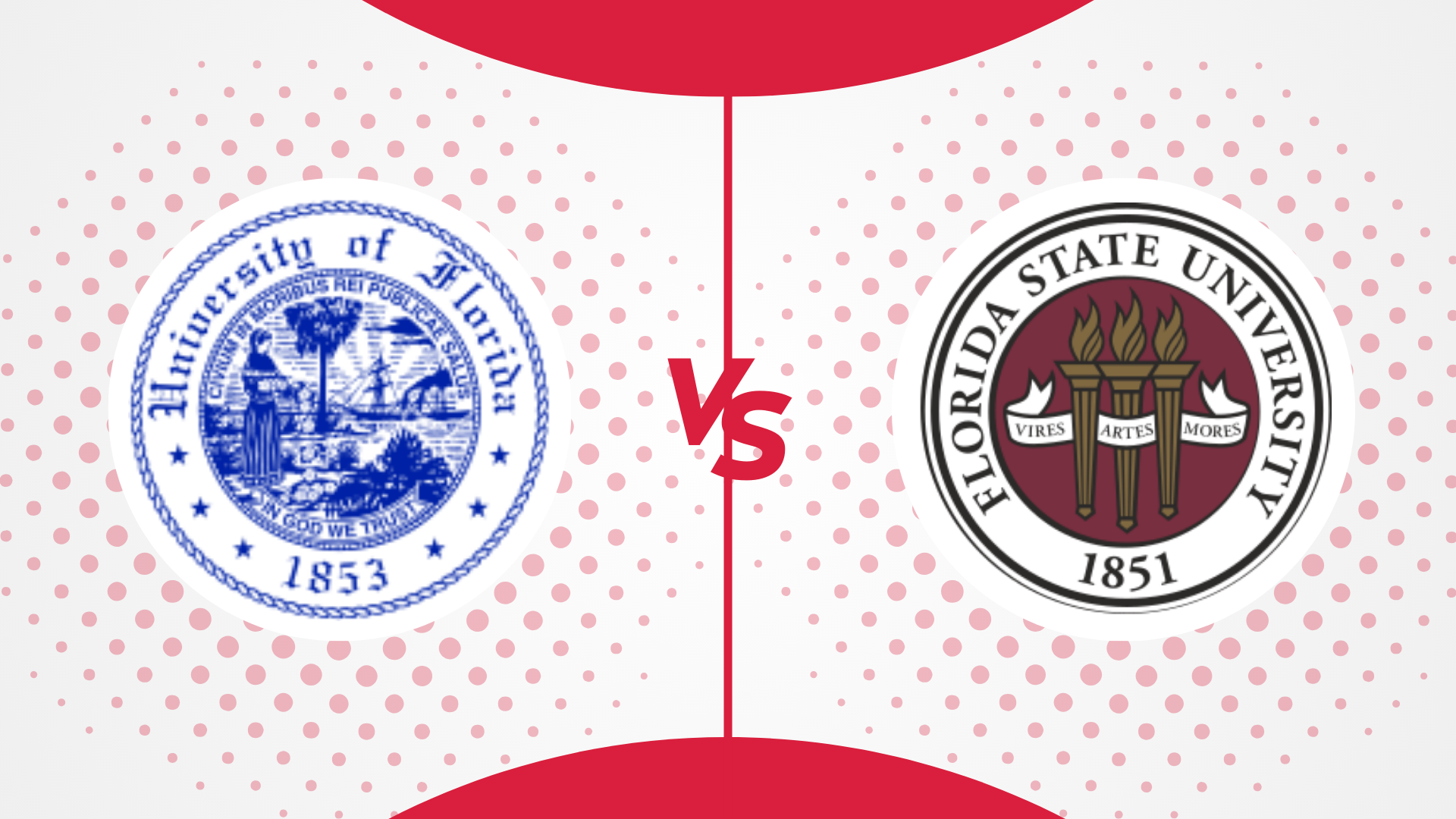
University of Florida vs Florida State University: Which One is Better For You in 2024
June 28, 2024 -

NYU vs Columbia: Which Is Better In 2024?
June 28, 2024 -

Princeton vs Columbia: Which Is Better In 2024?
June 28, 2024 -

NYU vs Cornell: Which One Is Better In 2024?
June 28, 2024 -

Boston University vs Northeastern: Which one is best in 2024
June 28, 2024 -

NYU vs UCLA: Which Is Better For You In 2024?
June 28, 2024














